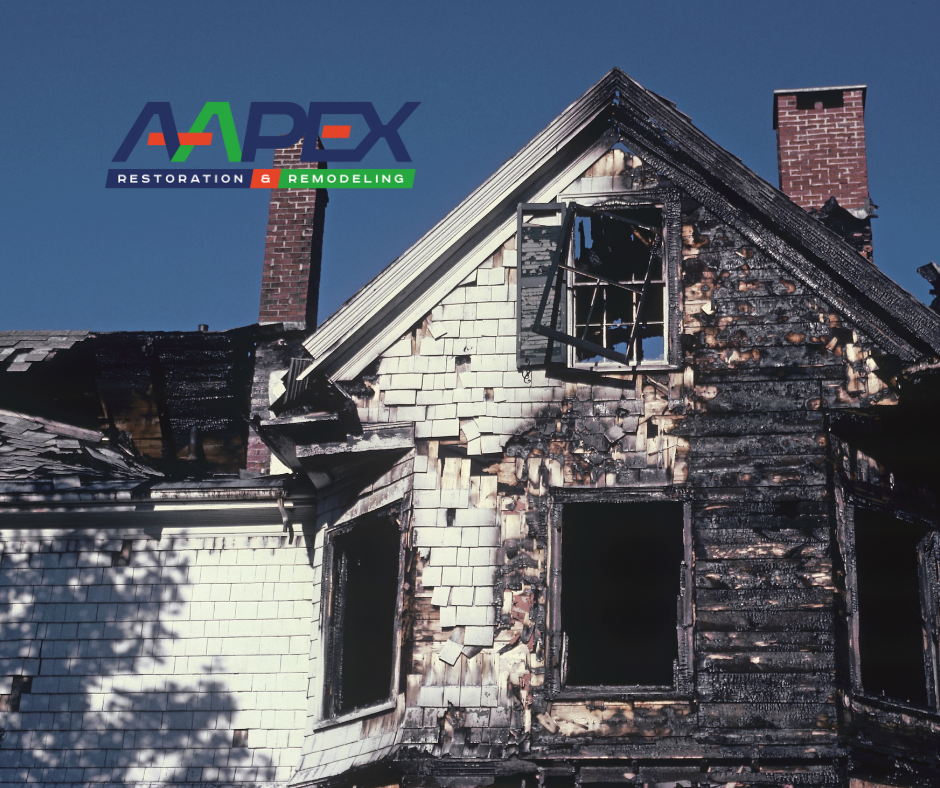Fire Damage Recovery
Winter brings with it the cozy warmth of crackling fires and glowing hearths, but it also presents unique challenges when it comes to fire safety. Despite our best efforts, accidents can still happen, and winter fire damage can be particularly devastating. Recovering from such an event requires careful planning, patience, and a systematic approach to restoration.
In the aftermath of a winter fire, the first step is to ensure the safety of yourself and your loved ones. If the fire has caused significant damage to your home, it may be necessary to temporarily relocate to a safer environment while the restoration process takes place. Once you’ve ensured everyone’s safety, it’s time to assess the extent of the damage.
Winter conditions can complicate fire damage recovery efforts, as cold temperatures and inclement weather can exacerbate existing issues. Water damage from firefighting efforts can freeze and cause further structural damage, while snow and ice accumulation can hinder access to the affected areas. It’s essential to work with experienced professionals who understand these challenges and have the necessary equipment and expertise to address them.
 Once the immediate dangers have been mitigated, the focus shifts to cleanup and restoration. This process often involves removing debris, salvaging belongings, and repairing or replacing damaged structures. In the winter months, extra care must be taken to prevent further damage from freezing temperatures and moisture buildup.
Once the immediate dangers have been mitigated, the focus shifts to cleanup and restoration. This process often involves removing debris, salvaging belongings, and repairing or replacing damaged structures. In the winter months, extra care must be taken to prevent further damage from freezing temperatures and moisture buildup.
One of the most critical aspects of winter fire damage recovery is restoring heat and utilities to the affected areas. In colder climates, this may involve repairing or replacing heating systems, water pipes, and electrical wiring that have been damaged by the fire. It’s essential to work with licensed contractors who can ensure that all repairs are completed safely and up to code.
Throughout the recovery process, it’s essential to document everything for insurance purposes. Keep detailed records of the damage, including photographs, receipts, and communication with your insurance provider. This documentation will help expedite the claims process and ensure that you receive the compensation you’re entitled to for your losses.
As you navigate the challenges of winter fire damage recovery, don’t hesitate to seek support from friends, family, and community resources. The emotional toll of such an event can be significant, and having a strong support network can make all the difference in your ability to cope and move forward.
While recovering from winter fire damage can be a daunting task, it’s important to remember that you’re not alone. With patience, perseverance, and the right support, you can restore your home and your life to its former glory, turning a devastating setback into an opportunity for renewal and resilience.
Planning for the Recovery Process
Before diving into the recovery process, it’s essential to develop a comprehensive plan outlining the steps you’ll need to take and the resources you’ll need to mobilize. Assess the damage to your home thoroughly, taking note of structural issues, water damage, and any other safety hazards that need to be addressed.
Once you have a clear understanding of the scope of the damage, prioritize tasks based on their urgency and importance. This may involve securing temporary housing, contacting your insurance provider, and hiring contractors to begin the cleanup and restoration process.
Addressing Structural Damage
Structural damage caused by fire can compromise the integrity of your home and pose significant safety risks. Work with a qualified structural engineer to assess the extent of the damage and develop a plan for repairs. This may involve reinforcing weakened areas, replacing damaged support beams, and ensuring that your home meets building code requirements.
Dealing with Water Damage
Water damage is a common side effect of firefighting efforts and can cause further destruction if not addressed promptly. Begin by removing standing water using pumps and dehumidifiers to dry out the affected areas. Inspect walls, floors, and ceilings for signs of water damage, such as discoloration, warping, or mold growth, and take steps to repair or replace damaged materials.
Salvaging Belongings
While some items may be irreparably damaged by fire or water, others may be salvageable with the right care and attention. Work with restoration professionals to assess the condition of your belongings and develop a plan for cleaning and restoration. This may involve specialized techniques such as dry cleaning, ozone treatment, or ultrasonic cleaning to remove soot, smoke, and water damage.
Ensuring Safety During the Recovery Process
Safety should always be a top priority during the fire damage recovery process. Wear appropriate personal protective equipment, such as gloves, goggles, and respirators, when handling debris or cleaning up contaminated areas. Be aware of potential hazards, such as unstable structures, electrical hazards, and toxic fumes, and take steps to mitigate risks wherever possible.
Recovering from winter fire damage is a complex and challenging process, but with careful planning, patience, and support, you can restore your home and your life to its former glory. Take the time to assess the damage, prioritize tasks, and work with qualified professionals to address structural issues, water damage, and other challenges. Remember to prioritize safety at every step of the process and seek support from friends, family, and community resources as needed. With determination and resilience, you can overcome the obstacles posed by winter fire damage and emerge stronger than ever before. Contact Aapex to help you navigate the fire damage recovery process.

